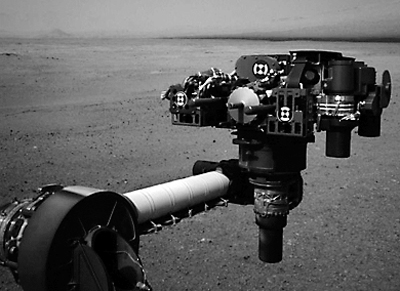A Future on Mars
2030: will this be the decade that humans first set foot on Mars?
You might never get 8 months off from school to take the trip, but science fiction writers and scientists have dreamed of colonies on Mars, with outlying cities on its moons Phobos and Deimos.

In 1993, this is what NASA imagined human habitats in Mars could look like.
This year, a Dutch group unveiled plans to establish a human Mars base by 2023 – one powered by 3,000 square metres of solar panels. According to their schedule, the first crew of four astronauts would arrive that year. Afterwards, at two year intervals, more people would be sent until, a decade later, over twenty people could be living and working on Mars. The catch? They’d have no way of getting back.
Even if there are people willing to permanently migrate to another planet, we might have to wait longer than that. There are many challenges still to be met. Less ambitious plans for 2016 include a new program which will send Insight to investigate the interior of the planet. Scientists would like to know how different it is from Earth’s own spinning core; in particular, is it solid or liquid? You see, what lies underneath the Martian surface is key to explaining what’s happening above it. Earth’s core generates a wide magnetic field that protects our planet and our atmosphere from the worst of the solar winds, but Mars doesn’t have a magnetic field and its thin atmosphere is constantly being stripped away – but scientists believe the core might not have always been like this.
Another proposed project – MAVEN – may become the first spacecraft to study the Martian atmosphere, tracking how fast atmospheric gases are being lost to space today. What MAVEN finds out will tell us a great deal about whether Mars could have supported life. It will use eight science instruments to collect data for the course of one Earth year, equivalent to about half of a Martian year.
While we’ve melted, photographed and shattered rocks on Mars, we’ve never actually brought any back to Earth. NASA is considering collaborating with the European Space Agency to collect and cache samples from Mars to eventually bring back to Earth.
Space exploration, while thrilling, doesn’t come cheap, and a robotic mission to collect soil and rock samples and return them to Earth for analysis could cost up to $8 billion. However, rocket entrepreneur Elon Musk believes he could do it in half a million dollars. Private companies like his SpaceX are now in the running to see who can make holidays to Mars affordable. “My vision is for a fully reusable rocket transport system between Earth and Mars that is able to re-fuel on Mars — this is very important — so you don’t have to carry the return fuel when you go there,” he told BBC.
Why invest so much money, time and human endeavour in finding out if Mars once supported life? There are many reasons, but the most compelling is what we find on the red planet can tell us the secrets our own planet hides.
Follow @timesonlinelk
comments powered by Disqus


























